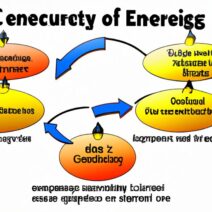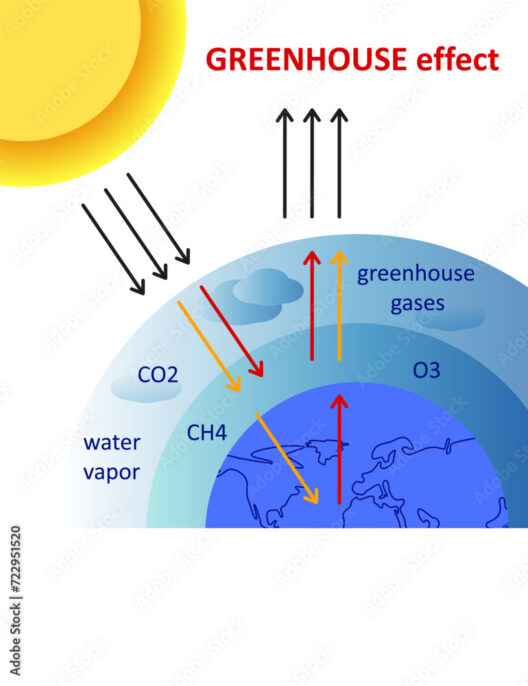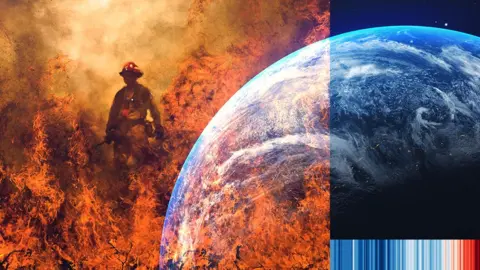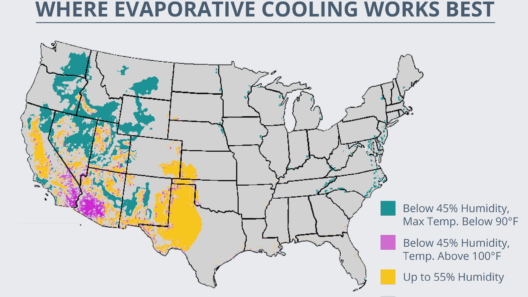Ecuador, a diminutive nation nestled in the equatorial region of South America, harbors a climatic tapestry as variegated as its breathtaking landscapes. Stretching from the high Andes Mountains—with their craggy peaks and sprawling plateaus—to the verdant expanses of the Amazon Rainforest, Ecuador embodies a microcosm of climatic diversity. The question arises: how does the interplay of altitude and geography dictate Ecuador’s weather patterns, and what challenges does it confront in the face of climate change?
The Andes Mountains, a formidable spine running from north to south, play a pivotal role in shaping Ecuador’s climate. At elevations exceeding 6,000 meters, the Andes emerge as one of the highest mountain ranges on the planet. Here, the climate exhibits a stark contrast, oscillating significantly within relatively short distances. Elevation dictates temperature and precipitation, creating a phenomenon known as altitudinal zonation. The high-altitude regions, characterized by cooler temperatures, experience a harsher climate than the temperate zones at lower elevations. In the paramo ecosystems, often blanketed with frail grasses and unique flora, temperatures may plummet at night despite warm days.
At altitudes above 3,200 meters, the parched, wind-swept landscapes thrive in an arid climate, punctuated by a few sporadic summer downpours. Contrasting sharply, the valleys nestled below the towering peaks enjoy milder conditions, conducive to agriculture and habitation. Notably, these fertile valleys experience a temperate climate with two distinct seasons—a dry season running from June to September and a more humid season spanning from October to May. This duality presents an abundance of opportunities for farmers, who cultivate diverse crops, including maize, potatoes, and various fruits. However, it has also precipitated challenges related to sustainable farming practices as climate change alters precipitation patterns.
As one descends from the towering Andes to the Amazon Rainforest, the climatic transition is pronounced. The Amazon basin envelops a significant portion of eastern Ecuador, and its tropical climate boasts dizzying levels of biodiversity. Here, the average temperature hovers around a sweltering 25-30 degrees Celsius year-round, with humidity levels that often exceed 80%. Precipitation is abundant, with annual totals reaching between 2,500 to 4,000 millimeters, leading to the lush, verdant imagery associated with the rainforest.
This region’s wet and dry seasons are subtle yet influential. Typically, the wet season spans from December to May, when relentless rains nourish the extensive forest. Conversely, the dry season, although still humid, sees a reduction in precipitation and the occasional drought, testing the resilience of the flora and fauna. As it stands, one might ponder—how does this climate affect the rich biodiversity found within? The Amazon Rainforest serves as a wondrous habitat for countless species; from electrifying toucans to elusive jaguars, each organism is intricately linked to the ecosystem. Yet, the sheer scale of deforestation and climate change poses an existential threat.
In examining the implications of climate change on Ecuadorian climates, attention must also be directed towards the phenomenon of El Niño, a recurrent climatic irregularity characterized by the warming of surface waters in the Pacific Ocean. Its effects resonate deeply across Ecuador, often culminating in erratic weather patterns. During El Niño years, the northern coastal region of Ecuador experiences intense rainfall, causing devastating floods, while the southern areas grapple with drought. These southwest coast regions, primarily reliant on agriculture, can suffer catastrophic losses, disrupting not only ecosystems but also local economies.
Moreover, the socio-economic vulnerability tied to climate variability demands scrutiny. Indigenous communities, custodians of traditional ecological knowledge, inhabit some of the most biophysically rich lands yet face pressing challenges. These groups, often reliant on the land and its resources for their livelihoods, must navigate the repercussions of climate change, including altered water cycles and diminished crop yields. As modern societal demands encroach upon these lands, the historical wisdom passed down through generations becomes increasingly invaluable yet perilous.
The challenges posed by climate change accumulate not only in alarming environmental changes but also in the realm of health and social stability. Warmer temperatures have been linked to the proliferation of vector-borne diseases, such as dengue fever and malaria, particularly in tropical regions like the Amazon. This raises a salient inquiry: how can Ecuador reconcile its rich biodiversity and cultural heritage with the whims of an ever-altering climate? The conundrum lies in balancing preservation with progress.
Ecuador is at a critical juncture, where efforts to promote sustainable practices must be amplified. The government, alongside indigenous populations, must strive to implement policies that protect natural resources while fostering resilience against climate adversities. Initiatives may include afforestation projects, sustainable agriculture practices, and awareness programs aimed at informing communities about climate adaptability.
In conclusion, Ecuador’s climate—an intricate dance between the Andes and the Amazon—symbolizes the broader environmental narrative faced by many nations. As this Andean nation battles the encroaching tide of climate change, it becomes evident that the answer does not merely reside within the particulars of its rich geography. Instead, it necessitates a collective commitment to safeguarding the intangible treasures of its ecosystems, cultures, and ultimately, its future. The path ahead may be fraught with trials, yet the vibrant landscapes of Ecuador call upon all to engage in a mindful approach to environmental stewardship.







